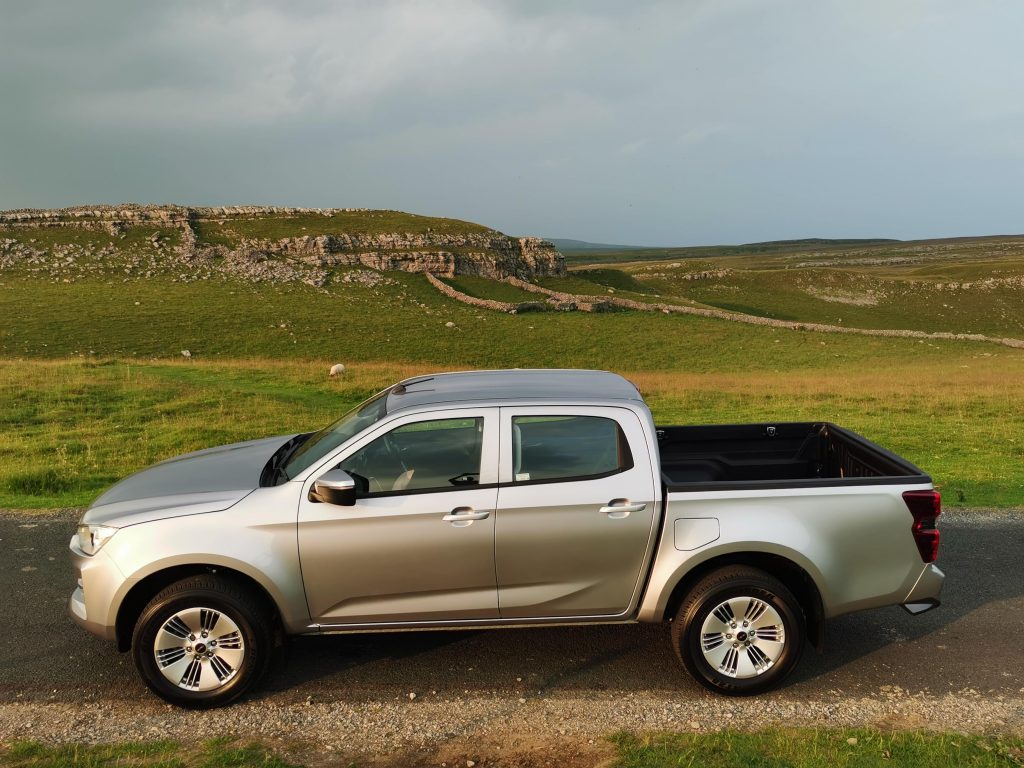Road Test and Review – Isuzu D-Max (2021MY)
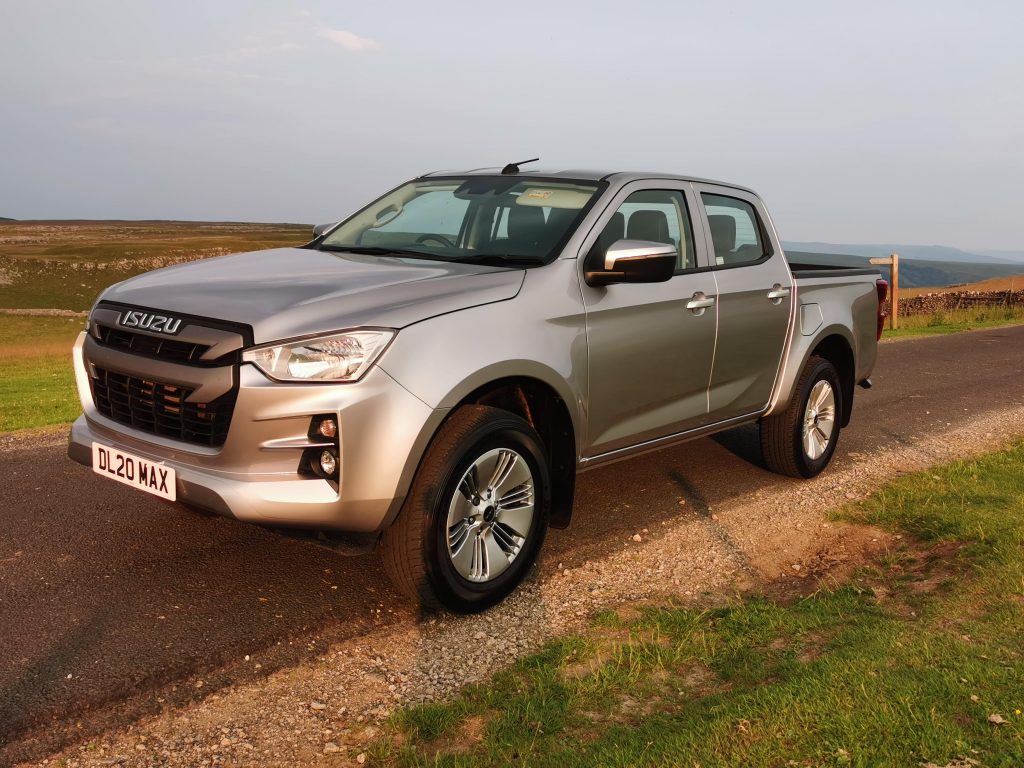
First introduced in 2012 to replace the Rodeo, the success of the Isuzu D-Max seemed to surprise even the UK’s importers and dealers, not to mention some established competitors who saw the truck nipping at their heels in the sales charts and undoubtedly causing a few awkward conversations in the boardrooms. Swiftly gaining a foothold in the agricultural sector in particular (and no doubt helped by the strength of the dealer network in these rural areas) the D-Max rapidly gained a reputation for being a capable, rugged, no nonsense truck that just got the job done.
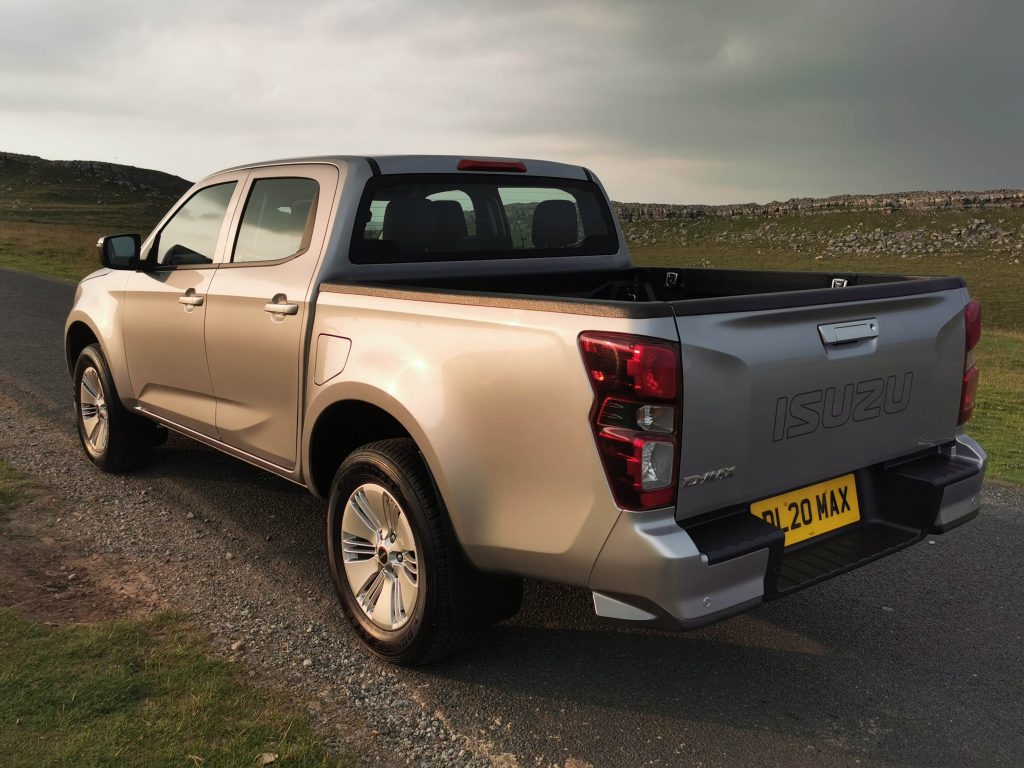
Time stands still for no one in the commercial vehicle sector and in the following nine years refresh after refresh were applied to the Ford Ranger, Mitsubishi L200, Toyota Hi-Lux and Nissan Navara, all of which started to make the Isuzu seem a little dated in both appearance and specification levels. Not helping was the reduction in engine size of the D-Max to 1.9 litres, which, although on paper was no real threat to performance, the typical Isuzu customer who had always considered engine cubic capacity to be a paramount consideration understandably concluded that this was a significant downgrade.
The (almost) all new Isuzu D-Max is designed to bring the truck bang up to date, whilst retaining the core strengths that have been recognised by customers for nearly a decade. Although still available in single and extended cab forms, the majority of sales will undoubtedly be in double cab guise. The range has been rationalised and spilt into Business, All-Purpose and Adventure segments. Business offers the Utility trim level, aimed at the workhorse market. All-Purpose consists of the DL20 and DL40 models (DL signifies the inclusion of a rear differential lock) – these trucks include some ‘bling’ such as alloy wheels and exterior chrome detail together with some spec improvements inside the pickup. The Adventure range consists of just the one model, the V-Cross, with the top level of equipment and some gun metal exterior detailing.
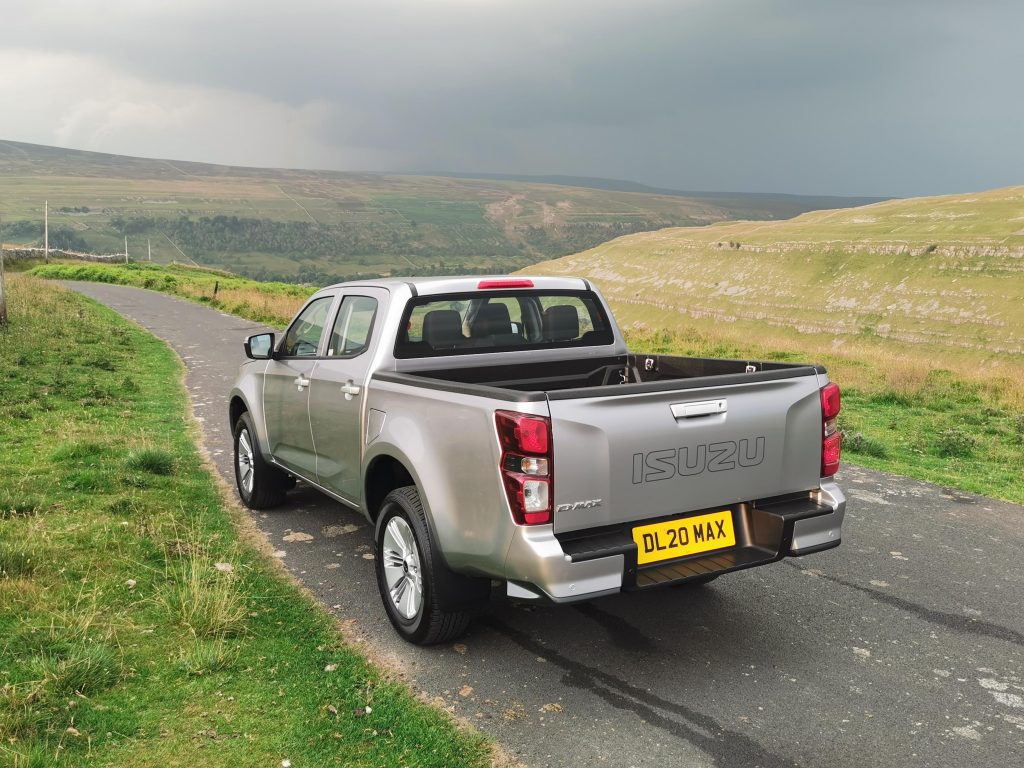
My test vehicle was a DL20 double cab fitted with a manual gearbox. Externally, the truck is dominated by an imposing front end, enhanced by a body coloured front bumper. The 18” alloy wheels might not to be everyone’s taste but as a visual proposition with its heavily sculpted lines the truck turned heads more than the majority of vehicles I’ve had on test, with numerous passers by stopping to look and asking questions.
Internally, you’d be forgiven in thinking that there isn’t a huge amount of spec included, probably due to the fact that we’re getting used to seeing a dominating multimedia screen, something the DL20 doesn’t really have. Still, a DAB radio with Bluetooth is included as is air conditioning, cruise control and rear parking sensors. The D-Max has an absolute plethora of safety features as standard under the collective name of ADAS (Advanced Driver Assist Systems), including (take a deep breath) Forward Collision Warning, Autonomous Emergency Braking, Traffic Sign Recognition, Intelligent Speed Limiter, Lane Departure Warning, Rear Cross Traffic Alert, Emergency Lane Keeping and Blind Spot Monitor. Automatic transmission models also gain Adaptive Cruise Control, Lane Keep Assist and Pedal Misapplication Mitigation.
The cab:
It’s probably fair to say that the cab is more practical than pretty. That’s not to suggest that that it’s not good, on the contrary it’s clean, uncluttered and there’s more storage space than some of the D-Max’s competitors, including two glovebox’s and the always handy dash top compartment. The seats are very comfortable indeed, even on a long journey. If the cab is lacking in anything it’s perhaps just a ‘wow’ factor but, that isn’t a thing that holds a lasting impression for the new owner who in the long term would no doubt prefer something that does the job properly, without bells and whistles. The Isuzu’s cab does just that.
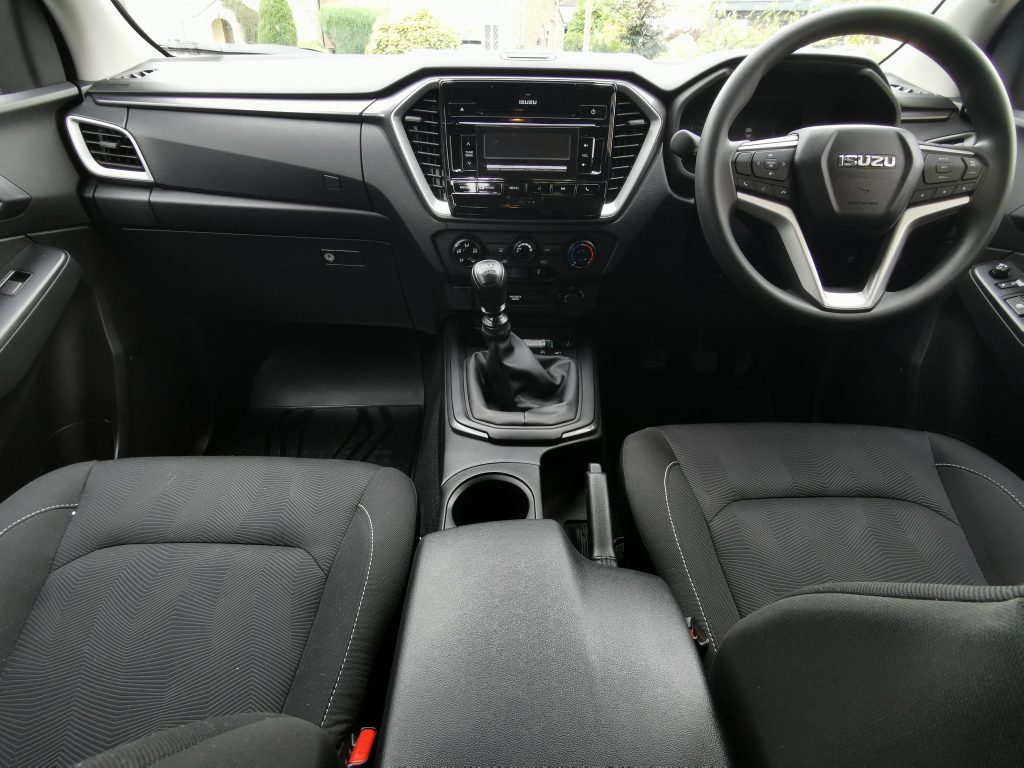
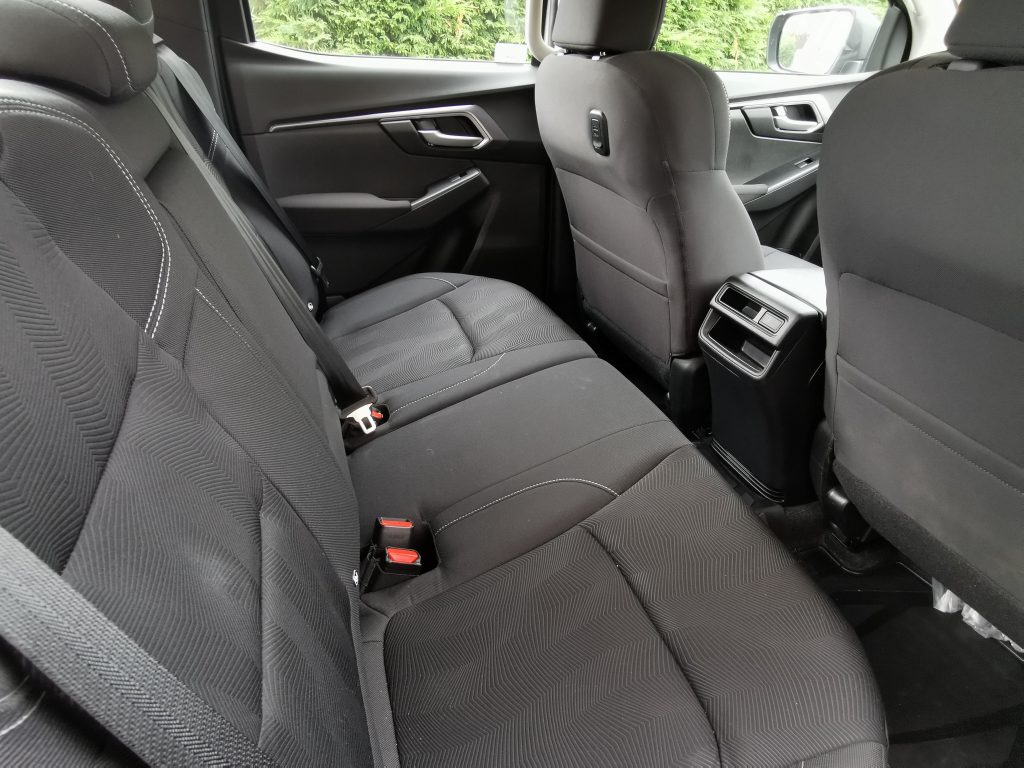
The business end:
There’s not too much you can say about the load bed on a pick up, but the DL20 has an internal length of 1805mm which compares well with other trucks. It continues to have the all important 1000kg+ payload, in fact offering an excellent 1120kg in this configuration. Again, and crucially for many D-Max customers, a 3500kg towing capacity is retained from the old model.
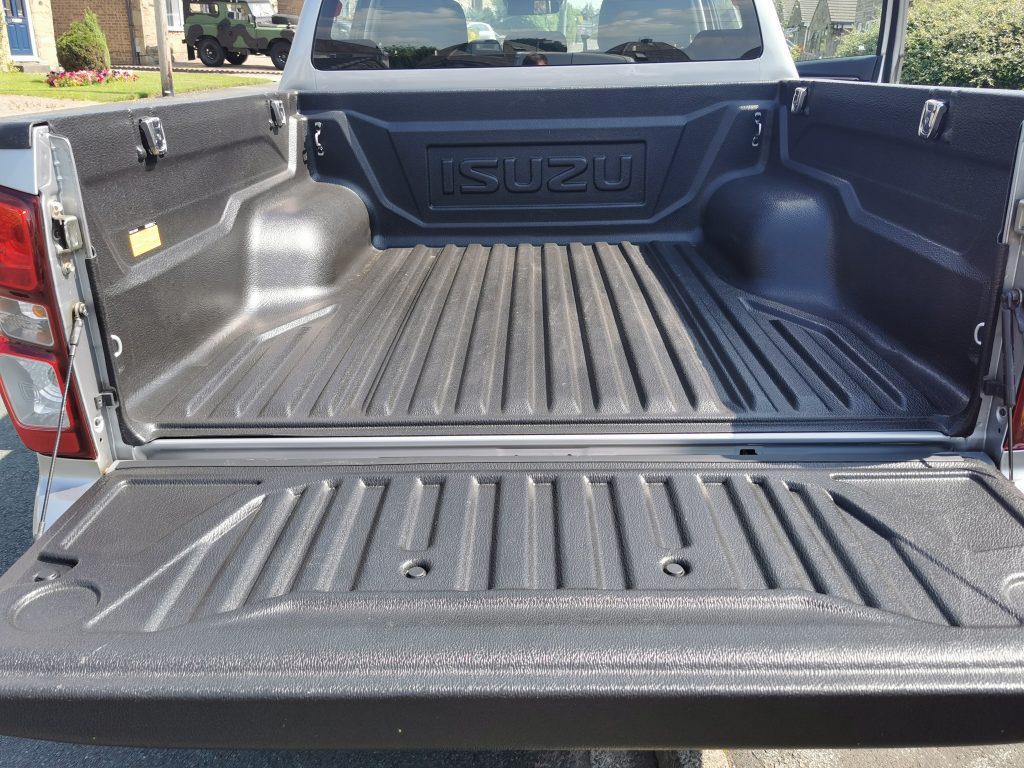
Driving impressions:
Compared to the competition the engine still feels a little unrefined at low speed, and although the manual gearbox has been improved it is still just that bit too ‘agricultural’ in use. Although there is definitely a lack of torque at low engine speeds, the 164PS unit performs perfectly adequately on the road, backed up by the manufacturers figures of a 0-62mph time of 12.7 seconds and a top speed of 112mph. The level of refinement whilst cruising is excellent with minimal engine, wind or road noise. Isuzu should be commended for this achievement, the D-Max excelling in this respect and proving to be much quieter than some rivals.
Steering and handling proved to be drama free, the only gripe being a hard ride, however all pick-ups suffer from this trait to varying degrees when being driven unladen (we had no opportunity to operate the D-Max with a payload).
Unfortunately, insurance restrictions meant that I was unable to use the vehicle off-road, although extensive experience with the previous model means that I’m in little doubt that this is one area where the D-Max will continue to excel.
The various driver assist technologies made their presence felt at times, and occasionally one would be bombarded with warnings, some of which seemed to be overly cautious. In particular, the Forward Collision Warning with its audible alarm and line of red LED’s flashing furiously at the foot of the windscreen was trigged far too often, even when approaching a 90 degree corner at anything other than a slow speed. I didn’t drive the vehicle briskly at all, and, unless there is a setting to reduce sensitivity this is something that is likely to annoy many owners.
Conclusion:
I’ve always been a big fan of the D-Max. It exudes an air of capability and gives the driver confidence that it’s up to the task. It’s still a bit ‘no frills’ in its approach (particularly at this trim level) but this just seems to add to the feeling that it’s built to do a job, and to do it properly.
How could it be improved? A bit more torque from the power unit and a slicker manual gearbox. That’s about it. Oh, and that collision warning…
